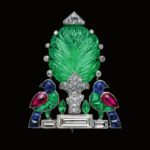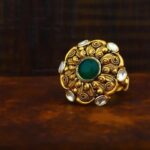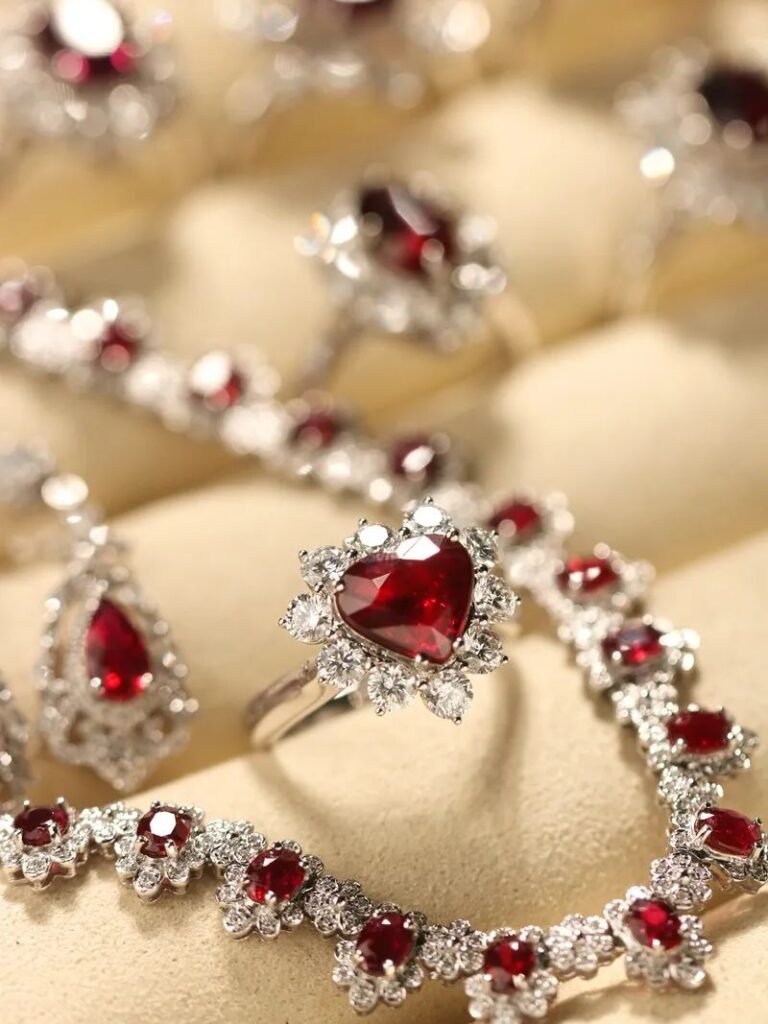
Ruby is the birthstone for those fortunate enough to be born in July. The name “ruby” comes from the Latin word “rubeus,” meaning red. In ancient Sanskrit, ruby was translated as “ratnaraj,” which means “king of precious stones.”
The Symbolism of Rubies
Over the centuries, rubies have accumulated a wealth of legends:
· The ancient text “Lapidaire en Vers” considered ruby “the most precious of the twelve stones God created when he created all things.”
· In ancient Sanskrit, ruby was called “ratnaraj,” translating to “king of precious stones.”
· In early cultures, due to its resemblance to the color of blood flowing through veins, people believed rubies bestowed life force.
· Ruby is the gemstone for 15th and 40th wedding anniversaries, symbolizing enduring love and marital longevity.
These beautiful and sacred legends have destined rubies to possess infinite charm. In modern times, people view them as symbols of nobility, love, and benevolence.
Ruby Sources
Myanmar (Burma)

The journey to explore July’s birthstone begins in Myanmar, one of the oldest documented sources of fine rubies. For over five centuries, the Mogok region of Myanmar has produced some of the most sought-after rubies. The rubies here are formed in low-iron marble, resulting in vivid colors and strong fluorescence. This source is considered the most valuable and rare.
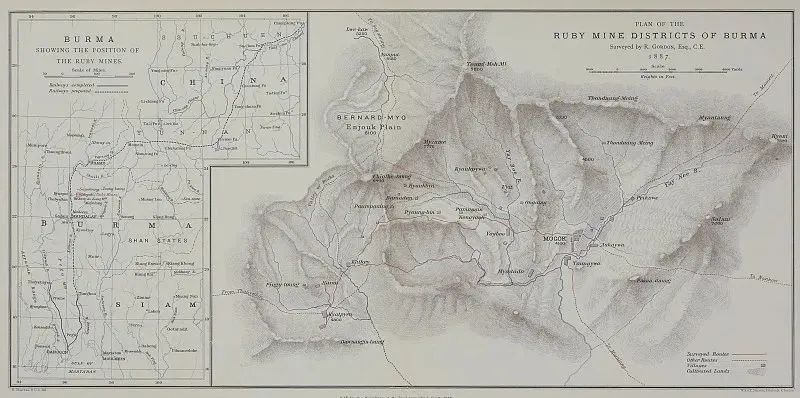
“A classic view of Mogok town, featuring the Chan Thar Gyi Pagoda and its surrounding lake. This area has been mined for gemstones since the British colonial era.”
Mozambique
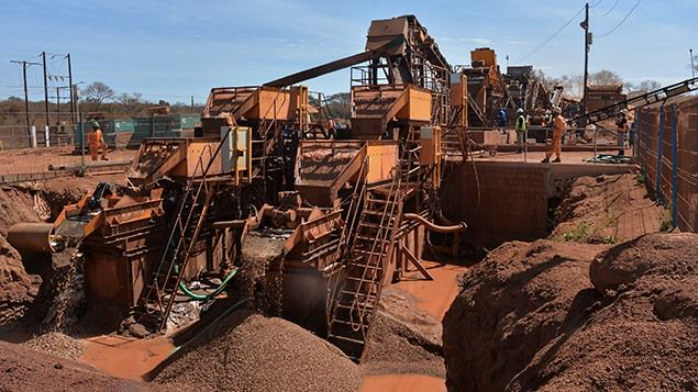
Currently, the highest-producing mining area is in Mozambique, Africa. Large ruby deposits were discovered here in 2009, quickly making it the world’s primary ruby source. However, Mozambican rubies tend to have higher iron content, resulting in darker hues even with high color saturation, and rarely exhibit fluorescence.
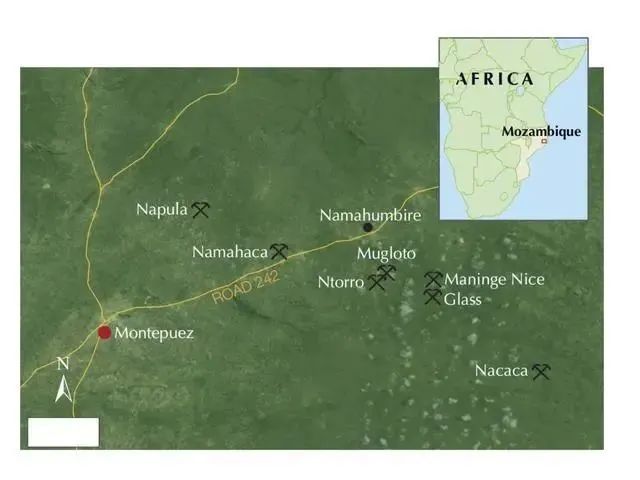
Madagascar is another source of high-quality rubies, with stones tending to have a slightly pinkish hue. Thai rubies are formed in basalt and have a higher iron content. Vietnam, Afghanistan, Tajikistan, India, and Russia also produce rubies in varying quantities.
Ruby Quality Grading
Color, weight, cut, and clarity are all factors that influence a ruby’s value.
Color
Color is the most crucial factor affecting the value of colored gemstones.
The finest rubies possess a pure, vivid red color, sometimes with a slight purplish hue.
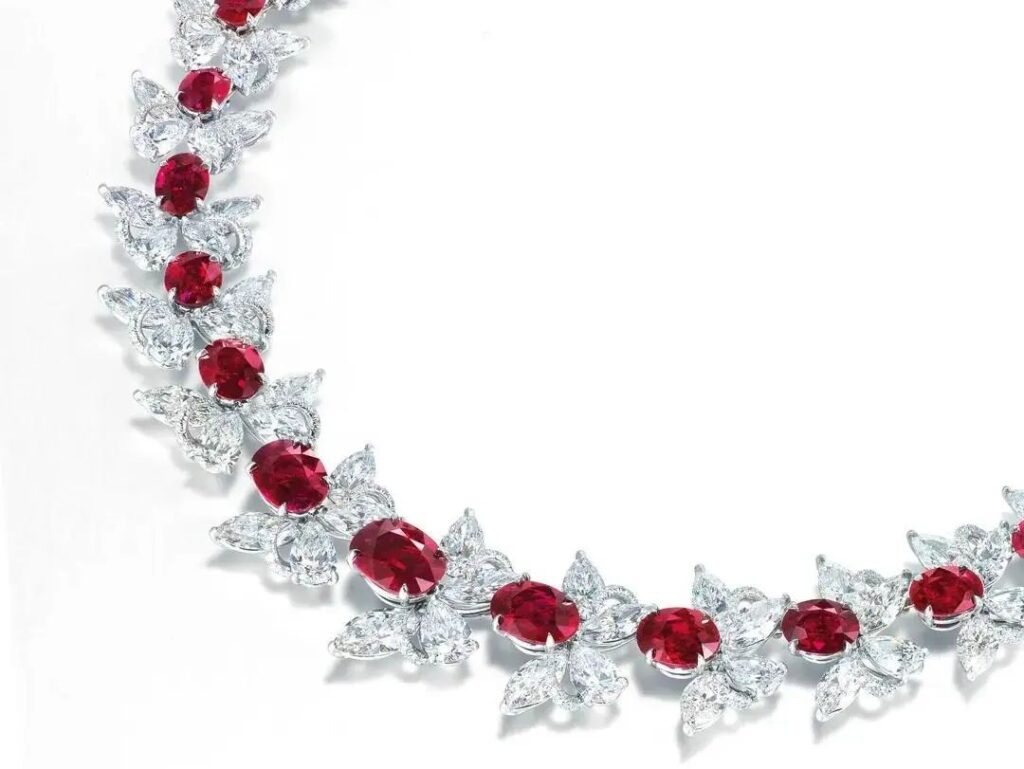
However, when the color contains too much orange or purple, the ruby’s value decreases.

The highest quality rubies have a vibrant color saturation; those that are too dark or too light are not considered top-quality.

Pigeon Blood Red
Colloquially, “pigeon blood red” refers to a color reminiscent of the eyes of red-eyed pigeons from Mogok, Myanmar, exuding vitality.
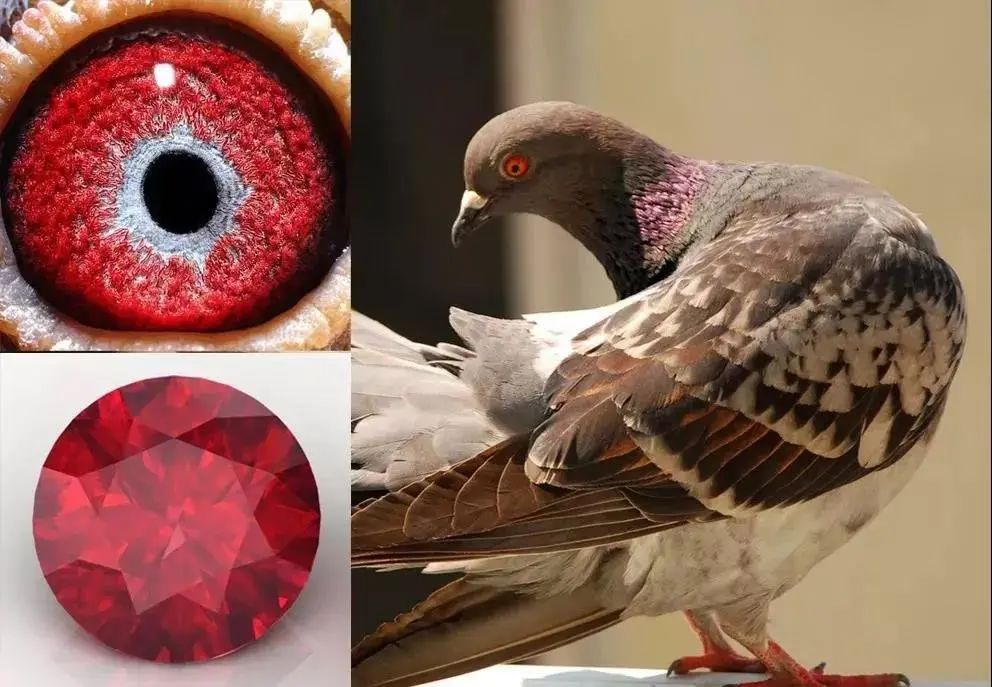
“Pigeon blood red” is the highest color grade set by international color grading standards for rubies, also known as “Vivid Red,” representing a high saturation and brightness of red.
On authoritative foreign certificates, it’s often written as “Pigeon’s Blood” in the color section.
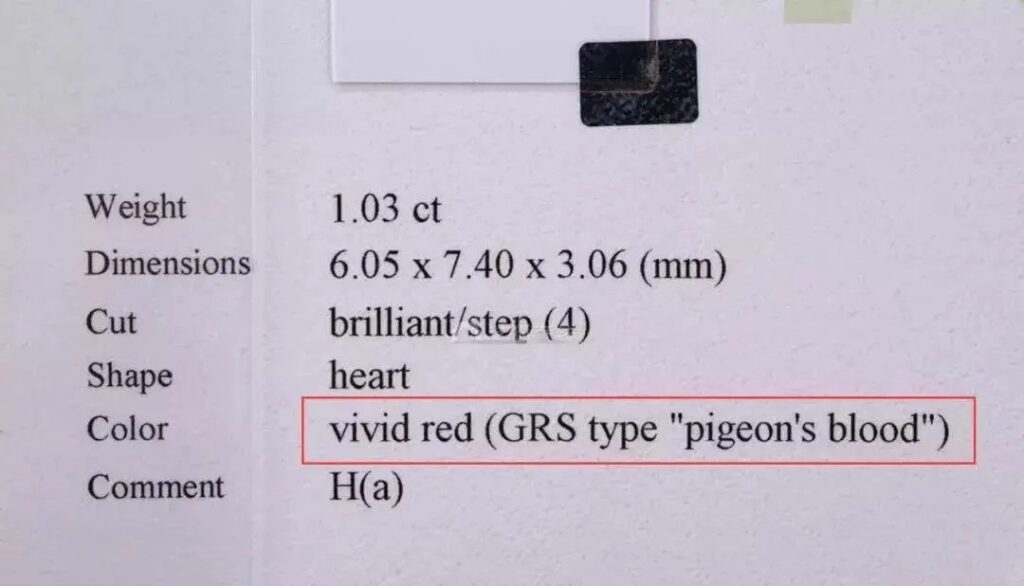
This pure red color with high saturation fully reveals the beauty of rubies and is widely recognized as the most beautiful color in rubies.
Royal Red
This color is slightly darker than pigeon blood red and is known as “Rabbit’s Blood” in Myanmar.
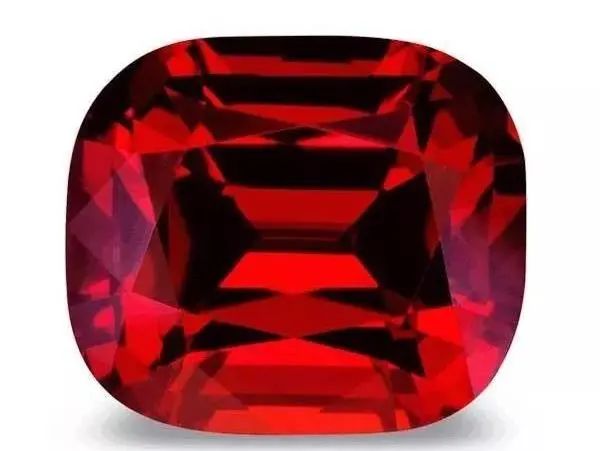
These rubies contain more iron, which suppresses fluorescence and reduces ion transfer, weakening the blue tones and resulting in a purer but darker red hue than pigeon blood red. Royal red rubies are mainly found in Mozambique, Thailand, Cambodia, Kenya, and Madagascar.
Hot PinkHot Pink
What gives hot pink its “hot” quality? These gems transmit more energy in the blue to purple wavelengths, giving the stone a slight bluish-red hue. Additionally, the low iron to high chromium ratio produces a lot of red fluorescence. The combination of these factors creates the “hot” quality.
Gems with this hue mainly contain more chromium than iron, resulting in longer blue light wavelengths. Therefore, hot pink gems always have a slight bluish-red color and strong fluorescence.
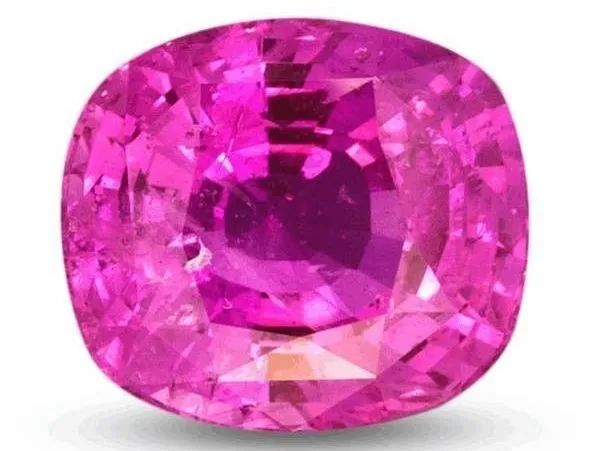
This color tone has been found in rubies or pink sapphires from Tajikistan, Afghanistan, Pakistan, Nepal, Myanmar, Vietnam, Yunnan (China), Tanzania, and Mozambique.
Purplish Red
This hue is named after the color of a purple-red lantern begonia flower. It’s an intense purplish-red, with more red than peach pink.
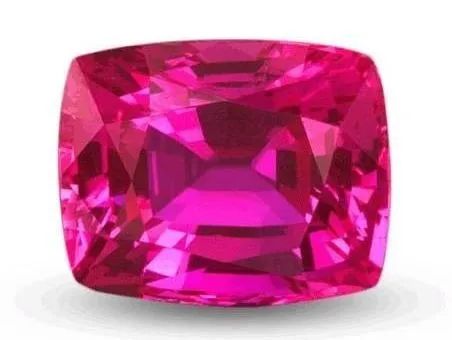
Purplish-red gems are found in Myanmar, Sri Lanka, Mozambique, Vietnam, Afghanistan, and Tanzania.
Transparency
Transparency refers to the degree to which a gemstone allows visible light to pass through it.
In the visual assessment of rubies, transparency is generally divided into five levels: transparent, semi-transparent, translucent, semi-translucent, and opaque.

Rubies that achieve the transparent level are the most aesthetically pleasing and, naturally, the most expensive. Following this, semi-transparent rubies are next in value, and so on.
Rubies with excellent transparency command very high prices, often several times higher than those of a lower transparency grade.
Clarity
Completely flawless rubies do not exist in reality; they all have some inclusions to a greater or lesser extent.
At this point, the value of a ruby depends on the visibility of these inclusions.

Obvious inclusions or those that affect transparency and brightness significantly reduce a ruby’s value.
If particularly prominent and large inclusions appear beneath the table, they greatly decrease the gem’s transparency, brilliance, and value.
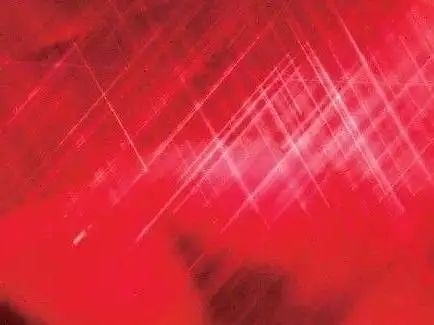
Each ruby source produces stones with characteristic inclusions, but the most common inclusions in rubies are rutile inclusions, which typically appear as needle-like, short columnar, or “fried egg” shapes.
Carat
Rubies are precious, rare, and difficult to mine. After washing and screening tons of ore, often only a few small rubies are obtained. High-quality rubies over one carat are extremely rare.

Therefore, for rubies, a one-carat difference in weight represents a significant price increase.
The larger the carat weight of a ruby, the rarer and more valuable it becomes.
Cut
The cut is one of the crucial factors contributing to a ruby’s beautiful fire and brilliance.
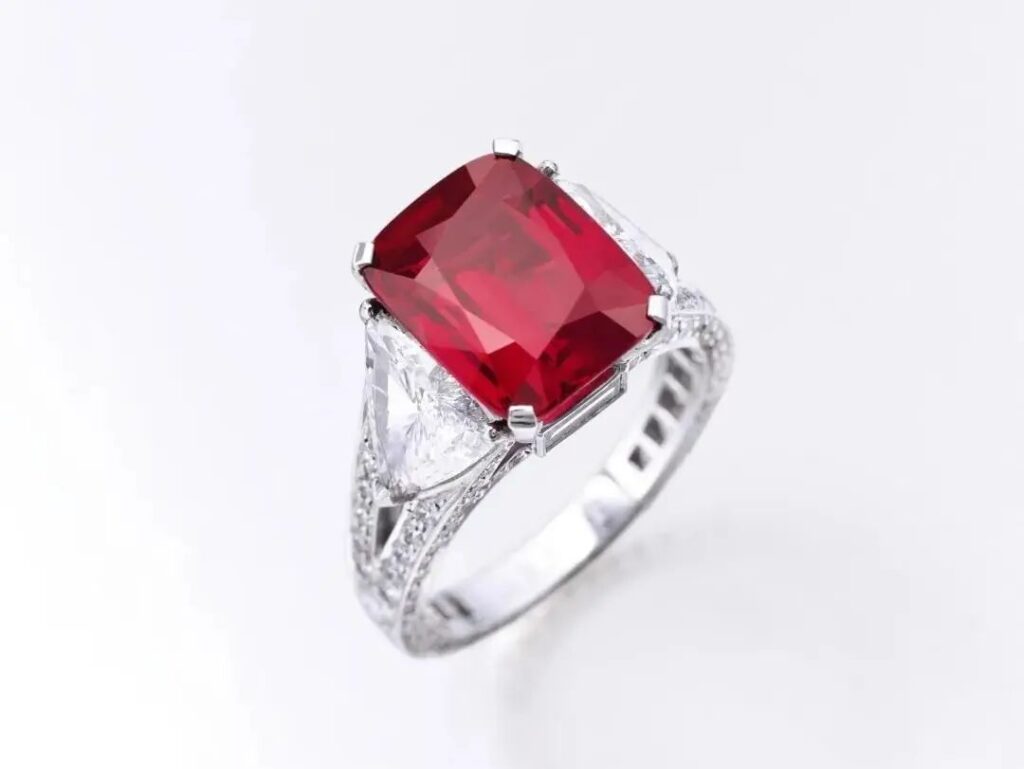
Cut refers to the orientation, type, proportion, symmetry, and polish level of the gemstone.
A cutting method that considers all aspects can make a ruby display captivating fire and vibrant color.
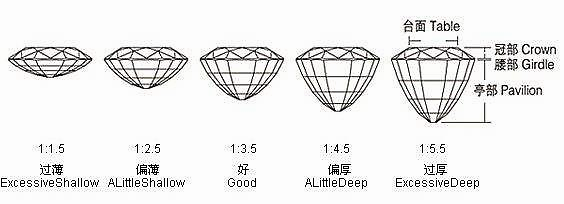
Based on the cut, rubies are generally graded into five levels: too thin, slightly thin, good, slightly thick, and too thick.
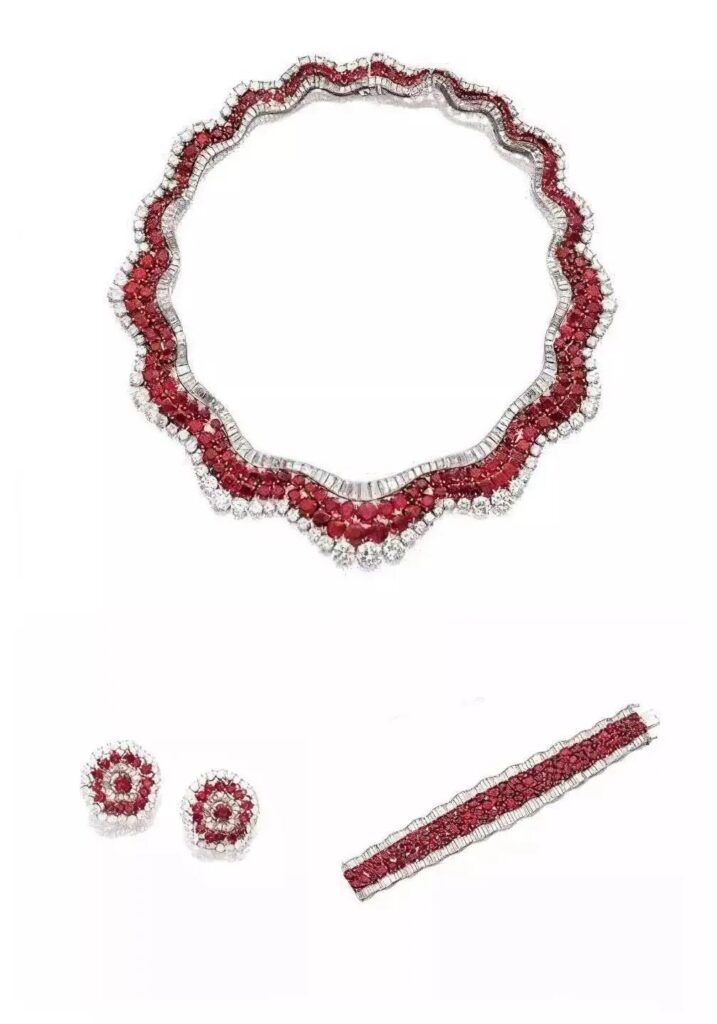
A perfect cut creates a gem’s brilliance and beauty. For the esteemed ruby, achieving perfect fire requires careful consideration of cutting proportions, symmetry, and polish level for each stone.
Ruby Auction Records
TOP 10
The Ratnaraj Ruby Ring
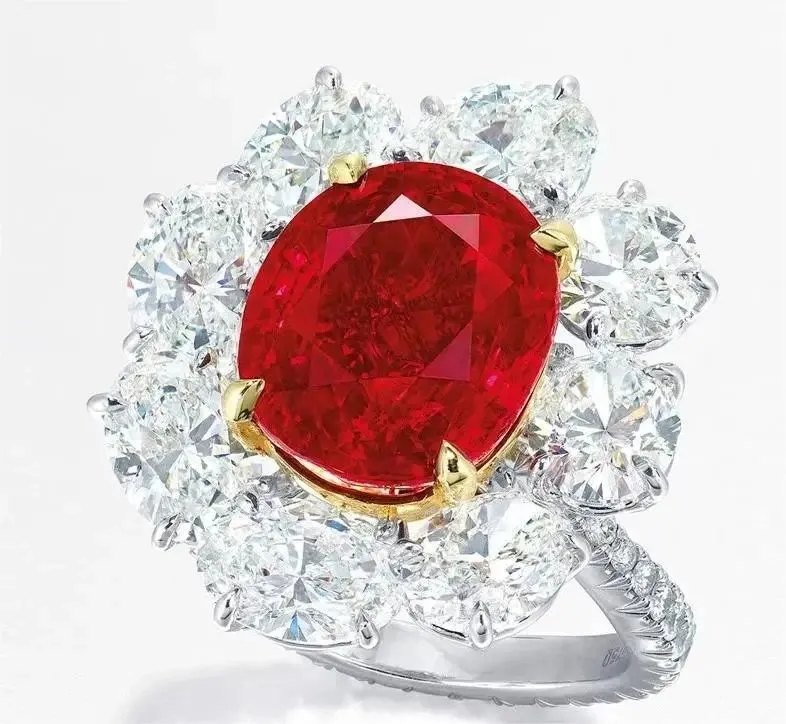
The Ratnaraj Ruby is one of the rarest Burmese pigeon blood rubies in auction history. It sold for $10.2 million at Christie’s Hong Kong on November 29, 2016. This oval-shaped ruby weighs approximately 10.05 carats and was designed by Faidee.
TOP 9
BHAGAT Ruby Ring
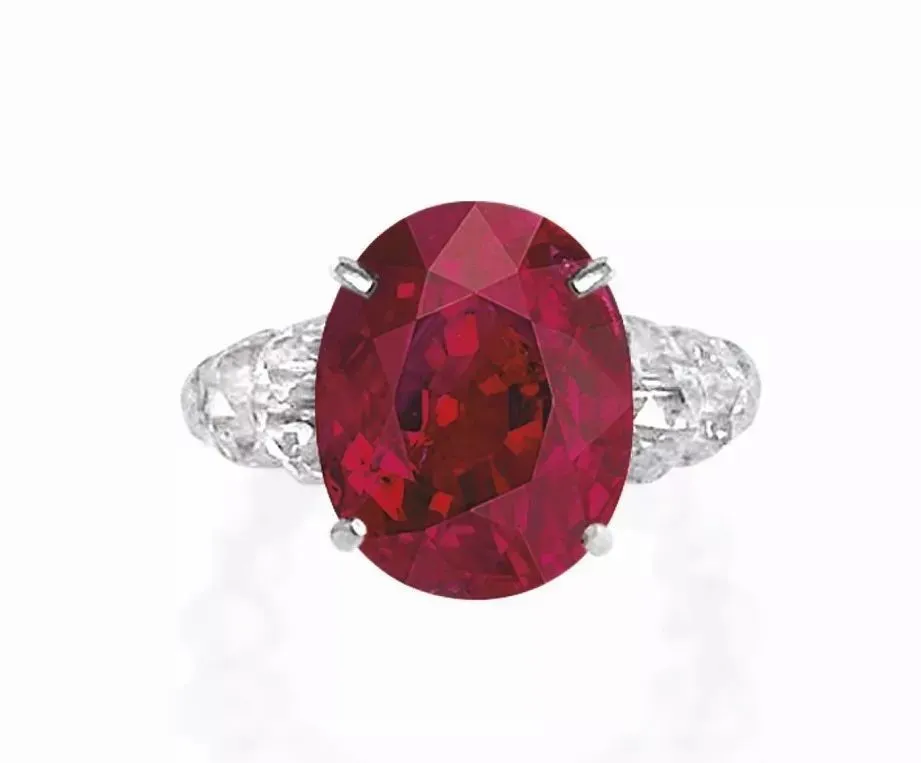
This ring, designed by BHAGAT, features a 13.26-carat Burmese ruby as its centerpiece. The ruby possesses a uniform, saturated color, is untreated, and exhibits multiple excellent characteristics. At Sotheby’s Hong Kong auction, this ring fetched HK$81.7 million (approximately $10.4 million), becoming the highest-selling item of the event.
TOP 8
Antique Cushion-Cut Ruby Ring
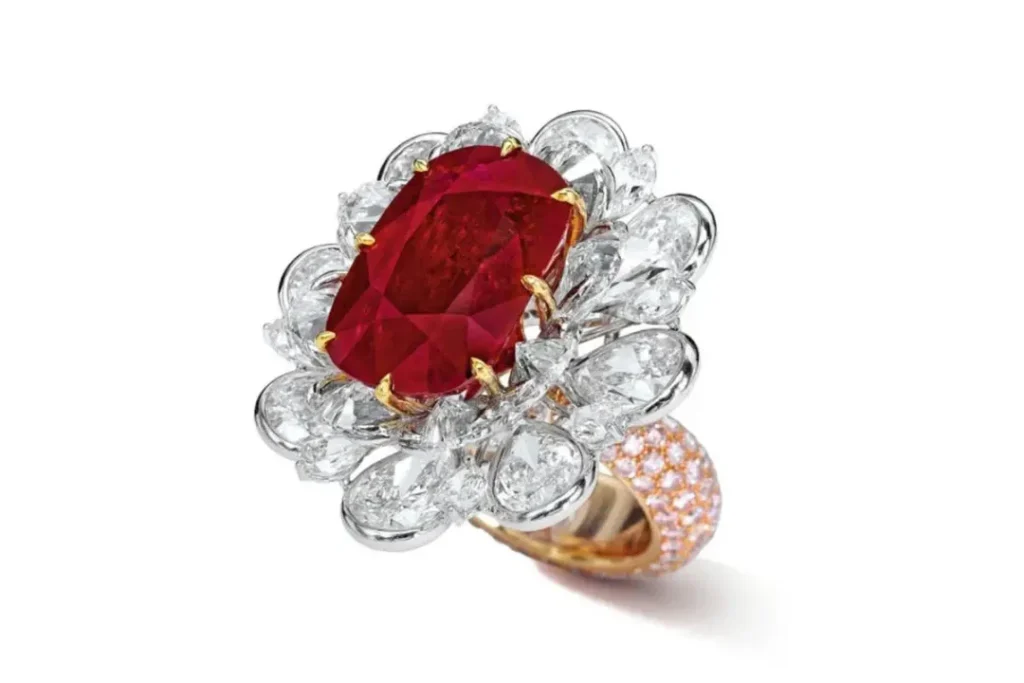
At Sotheby’s Hong Kong auction on April 3, 2018, an antique cushion-cut “pigeon blood” Burmese ruby ring was hammered down at HK$75 million, with a final sale price of HK$86,392,500. This 24.7-carat ruby is completely untreated. SSEF’s appendix described this ruby’s rarity, noting its exceptional size and color among natural Burmese rubies, making it a rare treasure of nature.
TOP 7
Ruby Earrings
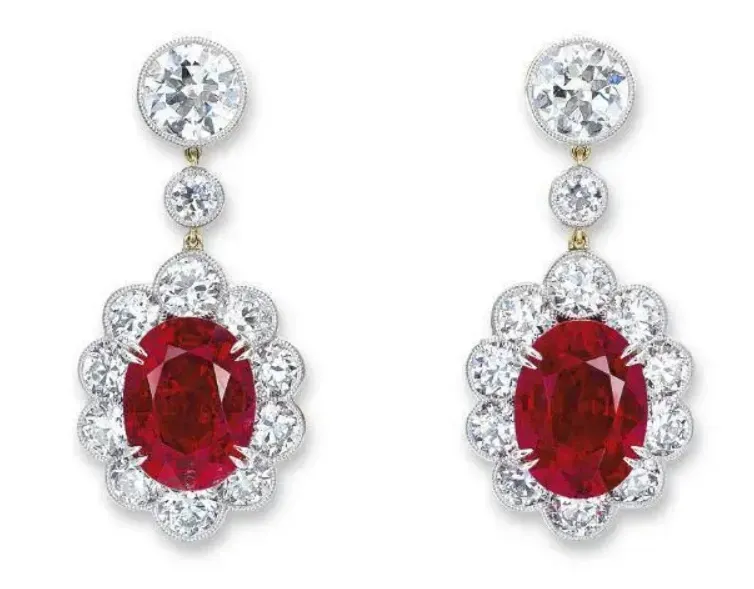
These earrings, set with two “pigeon blood” rubies weighing 10.02 and 9.09 carats respectively, are from Burma. Both rubies are naturally vivid red and untreated. This pair of earrings sold for HK$89,720,000 at Christie’s auction in 2015, setting a world record for ruby earrings at auction.
TOP 6
Etcetera Ruby Necklace
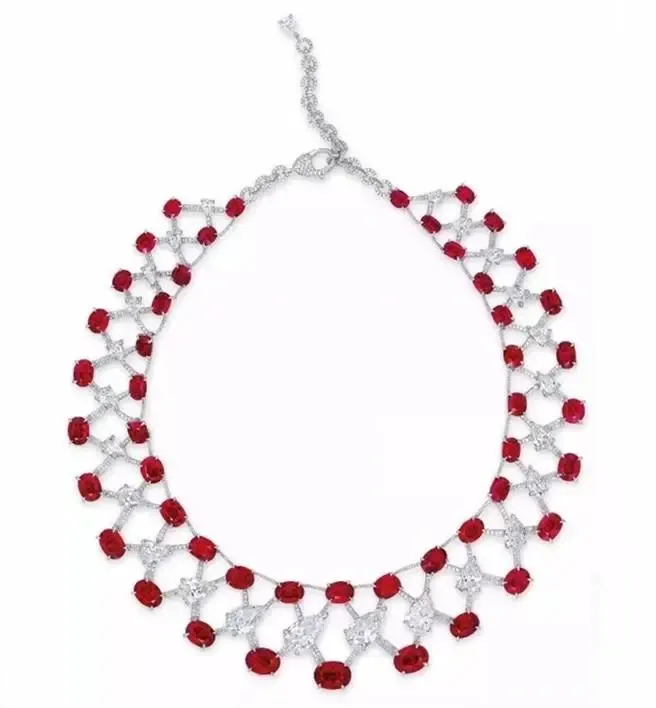
This ruby and diamond necklace designed by Etcetera sold for HK$100,360,000 at Christie’s Hong Kong auction in 2015, surpassing its estimated range of HK$56-88 million. The necklace is set with 48 oval and cushion-shaped rubies weighing between 1.10 and 7.02 carats each, all of which are untreated “pigeon blood” color from Burma. This translates to $12.95 million USD.
TOP 5
Extraordinary Ruby Ring

This unnamed ruby ring from Burma’s Mogok Valley, though not historically significant, is of exceptional quality with the coveted “pigeon blood” color. The ruby weighs 15.03 carats, is oval-cut, internally flawless, and has not undergone any heat treatment. The ring is surrounded by 10 round brilliant-cut diamonds, each weighing over 0.8 carats.
This high-quality pigeon blood ruby ring sold for 12.7515 million Swiss francs at Christie’s Geneva auction in May 2017.
TOP 4
The Jubilee Ruby Ring
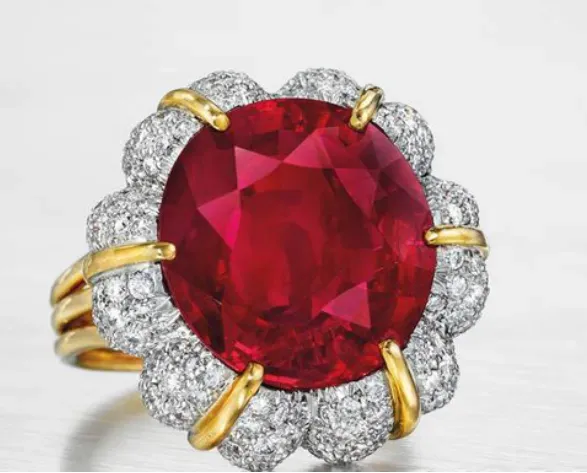
The centerpiece of this ring is a Burmese ruby of the highest “pigeon blood” quality with natural fluorescence. The ring was designed by Italian jewelry designer Fulco di Verdura, featuring a flower-shaped setting with diamond-encrusted petals.
The “Jubilee Ruby” ring was sold at Christie’s New York in 2016 for $14.16 million, achieving a per-carat price of $900,000. This sale broke the auction record for colored gemstones in the United States at that time.
TOP 3
The Crimson Flame Ruby
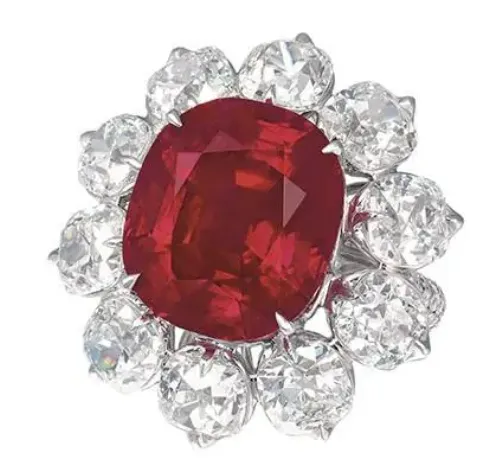
The ring’s main stone, sourced from Burma, weighs 15.04 carats, has a cushion cut, is untreated, and achieves the “pigeon blood” color grade.
At Christie’s Hong Kong Autumn Jewels Auction in December 2015, the Crimson Flame Ruby and Diamond Ring sold for HK$142 million (approximately $18.06 million). It set a new world auction record for the per-carat price of a ruby at over HK$9.3 million (about $1.22 million) per carat, a record that still stands today.
TOP 2
The Sunrise Ruby Ring
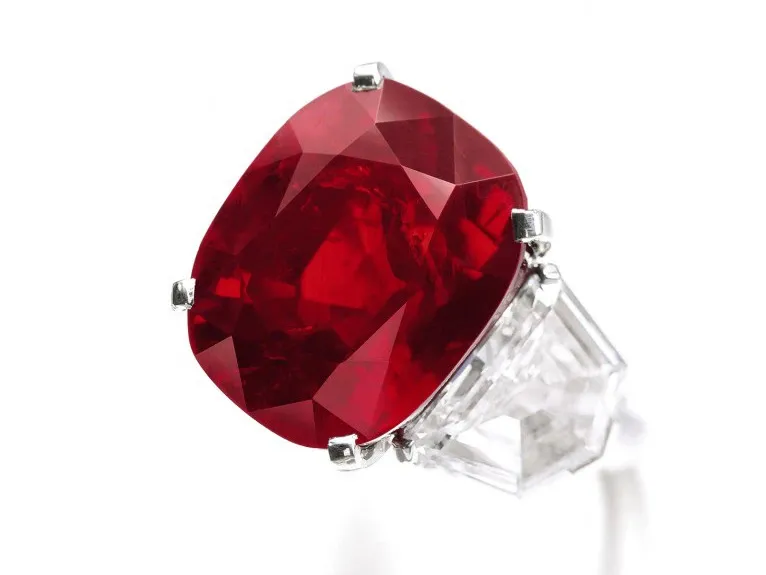
This vivid and saturated Sunrise Ruby, originating from Burma, was certified by both SSEF and Gubelin as “pigeon blood” color and confirmed to be untreated.
At Sotheby’s Geneva auction in 2015, a ruby ring weighing approximately 25.59 carats sold for $30.3 million, nearly doubling the auction house’s estimate. The ring was acquired by private collector Heidi Horten, with an average per-carat price of about $1.2 million.
In 2023, at Christie’s Geneva auction, 700 jewelry pieces from Heidi Horten’s private collection were put up for sale, including this Sunrise Ruby ring. However, due to controversies surrounding the source of Horten’s wealth and considerations of the inflated 2015 sale price, the ruby ring experienced a dramatic price drop of about $108 million, ultimately selling for $14.662 million.
TOP 1
The Estrela de FURA Ruby

In July 2022, FURA miners in Montepuez discovered an exceptionally transparent and vivid ruby rough weighing an astonishing 101 carats, named “ESTRELA DE FURA” (Star of FURA in Portuguese). After cutting and polishing, this ruby became a 55.22-carat cushion-cut faceted ruby, renamed “FURA’s Star.”
This ruby was certified by GRS as “Pigeon’s Blood” grade, exhibiting strong fluorescence under ultraviolet light, with an intense red color and rare exceptional clarity. After comparing it with GRS’s 30-year database, it was awarded the “Platinum Rare Award” to signify its rarity. Its uniqueness lies in its consistent brilliance under all light sources, making it an unprecedented and extraordinary gem that has stunned the entire jewelry world.
The auction record for this ruby was broken on June 8, 2023, at Sotheby’s New York auction. Eventually, “FURA’s Star” was sold for $34.8 million, setting a new auction record for Mozambique rubies and surpassing the $30.3 million sale of “The Sunrise Ruby” in 2015, becoming the highest-priced ruby ever sold at auction.
Unveiling the Allure of July’s Birthstone: A Deep Dive into the Mystique of Rubies
Tweet
